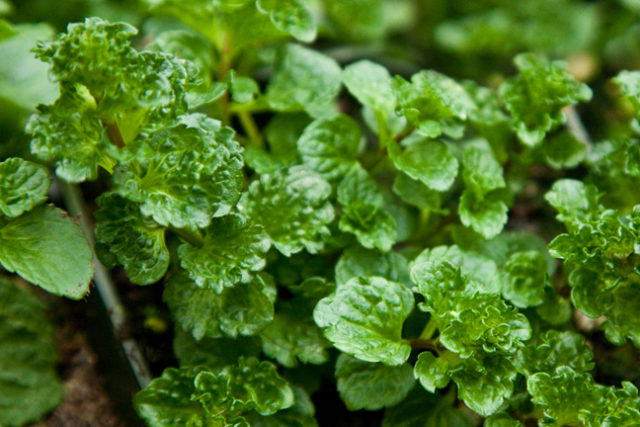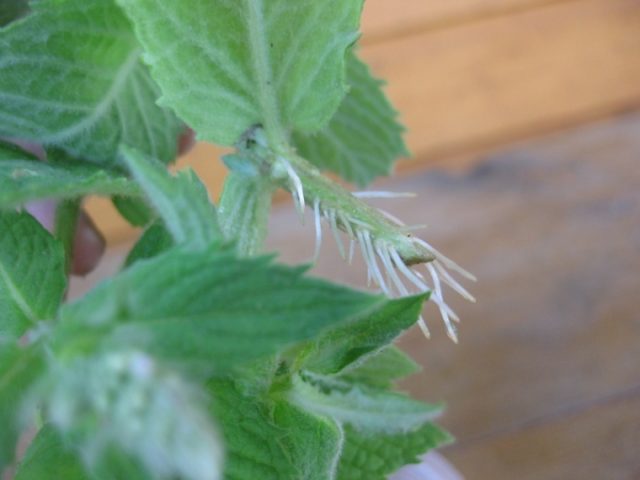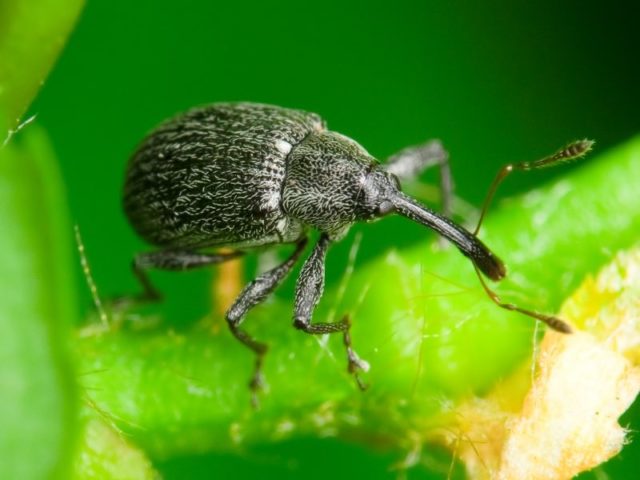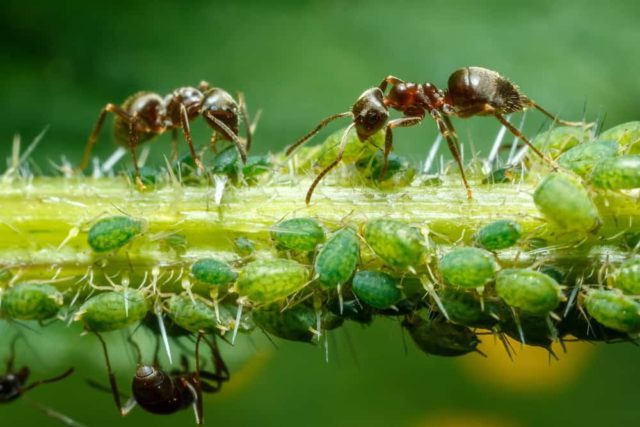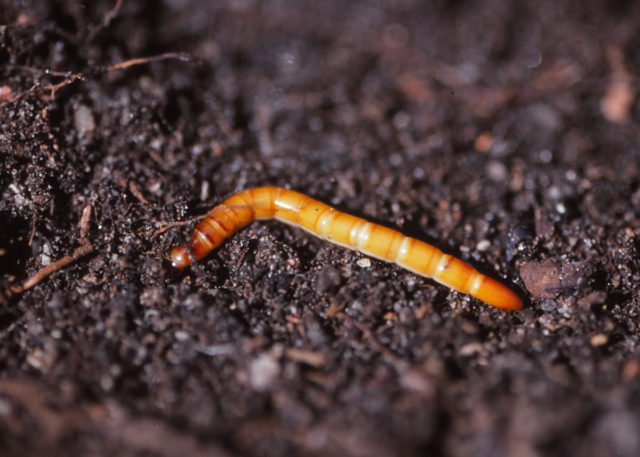Content
A distinctive feature of many types of mint is the feeling of chill that occurs in the mouth when eating the leaves of this plant. This is due to the presence of menthol, an organic compound that irritates cold receptors. However, not all plants of this family contain a substance in their composition, and one of these species is curly mint.
Description of curly mint
Photos and descriptions of curly mint can be found in many botanical publications. Its main difference from other plants of this family is in the shape of the leaves. In this species, they are pubescent, with a strongly corrugated leaf plate. Thanks to this, the species got its name - curly mint, or curly. Some other plant parameters are shown in the table below:
Parameter | Value |
Synonyms | Curly mint crispa, curly mint, curly mint, green |
Plant type | Perennial herbaceous |
General form | Bush 0.5-0.9 m high, multi-stemmed, slightly spreading |
Root | Creeping, tree-like, climbing, shallow, there is a small lobe of adventitious roots |
Stem | Erect, light green, turns reddish brown with age |
Leaves | Bright green, round-ovate, with short petioles, sessile in the upper part of the stem. The leaf plate has a characteristic lumpy-wrinkled surface, the edge is wavy |
Flowers | Small, mauve, clustered in inflorescences, false whorls, at the ends of the stems |
Curly mint in the photo below:
In the wild, this plant grows in North Africa, as well as in Western and Southeastern Europe.
What is the difference between curly mint and peppermint
Peppermint contains a large amount of essential oils, one of which is menthol. The refreshing aroma of this plant is strong and quite persistent. Unlike peppermint, curly mint contains virtually no menthol and has a very light, subtle aroma. In addition, differences appear in the biological structure.
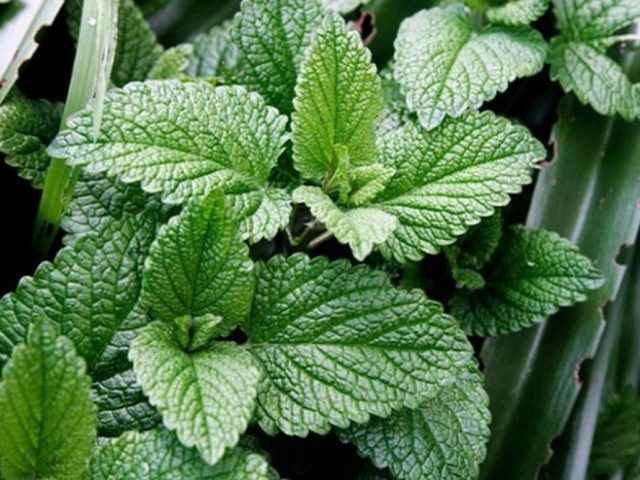
Peppermint leaves are sharper
Peppermint bushes are usually slightly lower, the leaf blade has a pointed end, while in curly it is more rounded.
The use of curly mint in cooking
In cooking, curly mint is used mainly as a spice. In dried form, it is added to the composition of spices, fresh herbs are used as a vegetable component in the preparation of various dishes and drinks.
What is the flavor of curly mint
Curly mint leaves lack the menthol harshness characteristic of many species. Its smell is delicate and delicate. It tastes tender and pleasant, as it has a characteristic mint flavor.
Where can you add curly mint?
Curly mint leaves are used to prepare dishes from meat, fish and poultry, various cocktails and soft drinks. They are widely used for canning fruits and vegetables, added to sauerkraut and pickled apples.Greens are an excellent decoration for dishes; they are often used as one of the components in various salads. Curly mint is brewed into tea and used hot and chilled, not only as a refreshing drink, but also as a medicine.
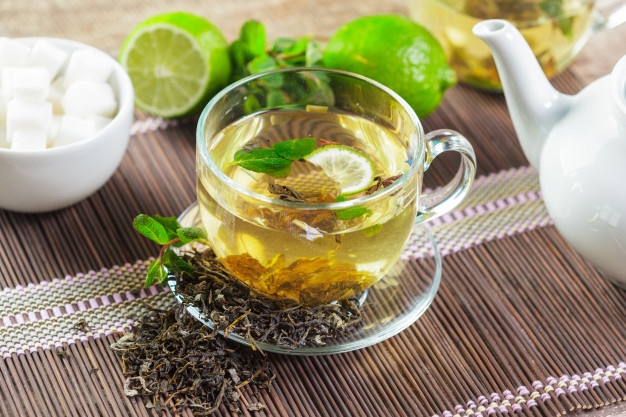
Mint tea is not only tasty, but also healthy
Useful properties of spearmint
The essential oils and aromatic compounds found in spearmint leaves have medicinal properties and are used for various medicinal purposes. And also one of the areas of application of this plant is cosmetology.
Medicinal uses of curly mint
It has long been noted that mint decoction causes a pronounced sedative reaction. Therefore, traditionally, this plant has been used to calm, normalize sleep, relieve excessive arousal or anxiety. However, the beneficial properties of curly mint do not end there. It can be used for the following medicinal purposes:
- As a choleretic agent that normalizes the digestion process.
- As a vasodilator that lowers blood pressure.
- For inhalation for colds, as well as an analgesic and diaphoretic.
- To relieve puffiness, as a local anesthetic for bruises.
- As an oral rinse to prevent and treat gum disease.
- As an additive for the treatment of rashes on the skin and its cleansing.

A mask of crushed mint leaves will cleanse the skin well
Limitations and contraindications
In some cases, the use of curly mint may not be beneficial, but harm. For example, low blood pressure is a contraindication to its use. In this case, the use of mint will only aggravate the situation. Care should be taken to use this plant for varicose veins, as it reduces the tone of the veins. It should not be used by those people who require increased attention at work, as well as those suffering from excessive sleepiness. Increased acidity of the stomach, individual intolerance and childhood (up to 3 years) are also contraindications to the use of curly mint.
Breeding features
Due to the ease of reproduction, curly mint has long been successfully grown not only in the territories of natural growth, but also in many countries of the temperate zone, including Russia. You can propagate a plant in the following ways:
- Seeds.
- Rhizome (root layers).
- Air layering.
- By dividing the bush.
- Cuttings.
The seed method of reproduction is quite long, but they will have to be used if it is not possible to use vegetative methods. Spearmint seeds can be purchased at many specialty stores or online. In the southern regions, you can plant them directly in open ground, and in more northern regions, it is preferable to use the seedling method. In this case, the seeds are germinated at home, and after the weather is right outside, the grown seedlings are transferred to a permanent place.
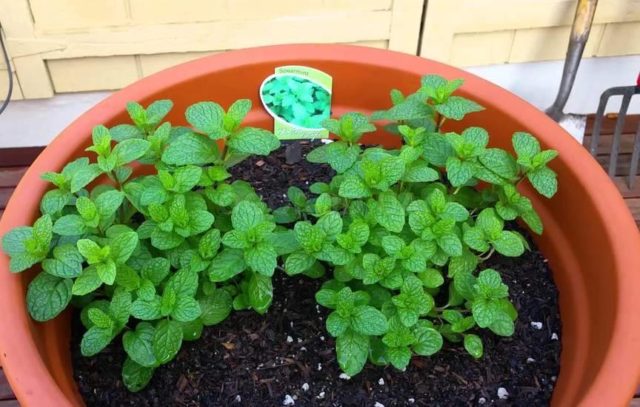
Mint seedlings are very easy to grow at home.
If plantings of curly mint are already available on the site, then it is preferable to use vegetative methods. Here is a brief description of each of them:
- Cuttings. As cuttings, the young apical parts of the shoots of curly mint 10-15 cm long are used. They are cut off and placed in water. Quite quickly, the cuttings begin to form their own root system in the water; after 1.5-2 weeks, the first roots can be seen at the cut points.After they reach a length of 2-3 cm, they can be transplanted into the ground at a previously prepared place.
Roots on a mint handle appear quite quickly in water.
- Root layers. On the climbing rhizomes of curly mint, there are a large number of dormant buds. For seedlings, a part of the root 10-12 cm long is used. It is cut off from the common rhizome and planted in moist soil. With regular watering, the buds wake up pretty quickly, and the plant germinates.
- By way of division bush can be used if its age exceeds 4-5 years. In this case, the plant is completely dug out of the ground and divided into several parts so that each has a sufficient number of roots and a stem with growth buds. Then the delenki are seated in permanent places.
- Air layering. If you bend the side shoot of the bush to the ground and sprinkle it with earth, then in each of the nodes its own root system will begin to form rather quickly, and an even row of young seedlings will sprout in place of the sprinkled shoot. They are carefully separated from the maternal shoot, separated from each other and dug out of the ground, then transplanted to a permanent place.
Landing rules
It is better to dig up a bed for planting curly mint in the fall, this will reduce the likelihood of pests appearing next year. Additionally, you can treat the soil with a solution of potassium permanganate. In the spring, the beds are dug up again, while introducing mineral and organic fertilizers. At this time, you can use manure and chicken droppings, they enrich the soil with nitrogen and contribute to the rapid growth of green mass.

Good preparation of the beds is the basis for an excellent harvest
After the threat of night frosts has completely passed and the earth warms up to + 5-8 ° C, you can start planting.
Curly mint seedlings are planted in rows, keeping a distance of 25-30 cm between neighboring plants. The planting pits are preliminarily prepared in such a way that their volume is sufficient for the root system of the seedlings. Before planting, they are spilled with water, then a seedling is placed in them and the soil is slightly compacted. After that, the root system is sprinkled with earth to the level of the garden bed, and then abundantly watered with water.
Growing features
After planting curly mint, regular, moderate watering is required. When the plants grow up, they will need to be watered less often, and with a sufficient amount of atmospheric precipitation, additional soil moisture should be completely abandoned. It is very important to periodically loosen the root zone of the bushes so that the surface roots of curly mint receive a sufficient amount of oxygen. Weeds from the garden must be removed in a timely manner.
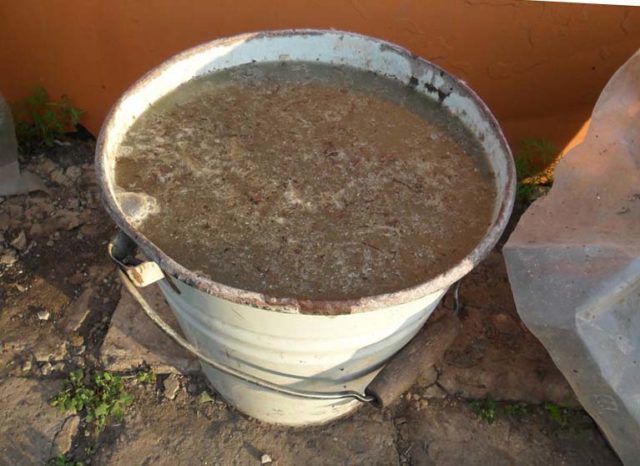
Slurry is an excellent top dressing for a quick green mass gain
Periodically, curly mint bushes can be fed with mineral fertilizers or organic matter. It is especially important to do this in the spring and early summer. For feeding, usually slurry or diluted chicken droppings are used. These components contain a large amount of nitrogen, which stimulates the enhanced growth of green mass. However, it must be remembered that an excessive amount of nitrogen fertilizers is a risk factor for the development of certain fungal diseases.
Pests and diseases
The juicy and delicate leaves of curly mint attract not only people, but also insect pests. Some of the most common on this plant are:
- Weevil. A small bug with a characteristic proboscis, feeding on young green plants.
May damage not only leaves but also flower buds
- Aphid. A very small sucking insect of light green color. A feature of the aphid is its fertility. Often they settle on plants in large colonies, literally sucking out all the juices from it.
Aphids with their inseparable companions - ants
- Mint flea. A small greenish brown beetle.It feeds on young greens, damages leaves and growth buds.
- Wireworm. It is a white, tough larva of a click beetle that lives in the ground. Damages the roots of many plants, including spearmint.
Violations in the care and adverse weather conditions can provoke the appearance of various diseases, primarily fungal, on the curly mint bushes. The most common ones are the following:
- Rust. The disease can be recognized by the characteristic reddish-brown spore pads of the fungus. Gradually, foci of rot appear in their place and the plant dies off.
- Septoria. It manifests itself in the form of small, clearly outlined light spots with a dark border, in place of which foci of dead tissue are then formed, which gradually collapses. Septoria is most often manifested in conditions of high temperature and humidity.
- Powdery mildew. The disease can be recognized by the characteristic thin light bloom on the leaves. In such places, plant tissues darken and rot very quickly. A risk factor for the occurrence of powdery mildew is high humidity, as well as sharp drops in temperature.
Prevention of the occurrence of diseases and the appearance of pests is mainly agrotechnical measures, such as deep autumn plowing, harvesting plant residues, timely removal of diseased plants, etc.
When and How to Collect Curly Mint
The best time to harvest spearmint is mid-July. At this time, before the beginning of flowering, the leaves of the plant contain the maximum amount of aromatic substances. Harvesting mint can be done as individual leaves or whole plants, cutting them off and tying them into bunches. This should be done on a warm, dry day, be sure to wait until the morning dew has dried on the leaves.
How to dry curly mint properly
The collected curly mint leaves are scattered on baking trays or plywood boards covered with clean paper, which are placed in a dry, well-ventilated area. At the same time, direct sunlight should not fall on the grass. To prevent the leaves from caking, they need to be stirred periodically. After they become brittle, they are crushed and stored.
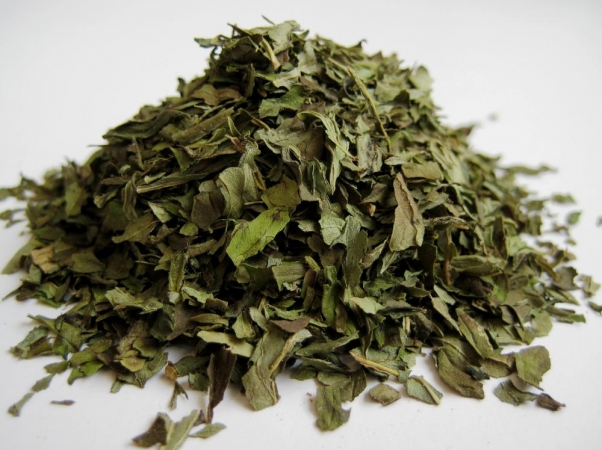
When completely dried, mint leaves rustle and brittle
It is best to store dried spearmint leaves in a tight-fitting glass or earthenware container. The location of the harvested plant material in tightly closed canvas or fabric bags is allowed, but in this case they must be kept in a cool dry room, isolated from other spices.
A short video on drying mint can be viewed at the link below.
Conclusion
Curly mint is a beautiful and useful plant. It combines both culinary and medicinal properties and will become an indispensable crop when planting, for example, a pharmaceutical garden. Caring for this plant is uncomplicated, and the ease of reproduction makes growing curly mint a breeze, even for beginners.
